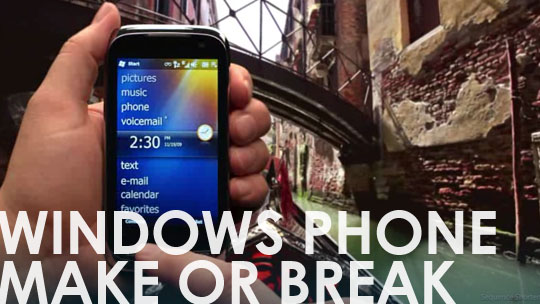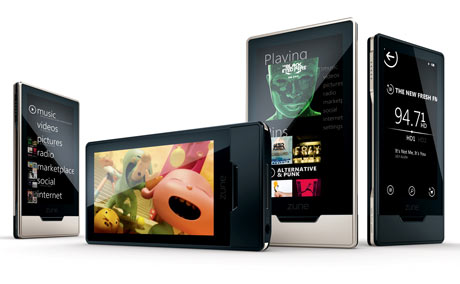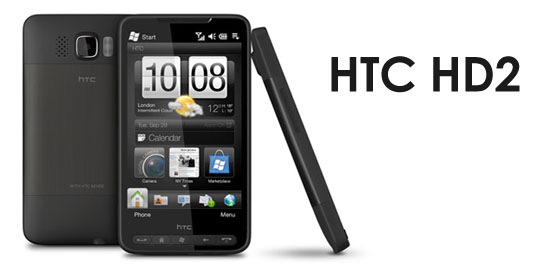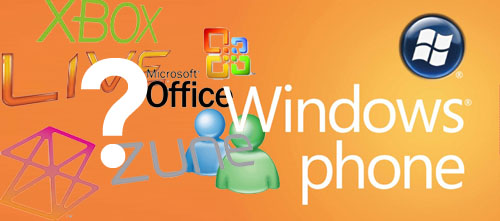WindowsPhone – what Microsoft needs to do at Mobile World Congress
 We rarely delve into outright speculation here at rgbHeadquarters, but over the past month or two, there have been a number of rumours regarding what is going to be a major update to the Windows Mobile platform with version 7, and the rebranding to Windows Phone. With Mobile World Congress starting next week, those rumours have increased, and many have solidified somewhat. What to expect from Microsoft at MWC is largely dependent on what they need to fix, and a little reading of the tea leaves.
We rarely delve into outright speculation here at rgbHeadquarters, but over the past month or two, there have been a number of rumours regarding what is going to be a major update to the Windows Mobile platform with version 7, and the rebranding to Windows Phone. With Mobile World Congress starting next week, those rumours have increased, and many have solidified somewhat. What to expect from Microsoft at MWC is largely dependent on what they need to fix, and a little reading of the tea leaves.
Looking back at Windows Mobile
Microsoft’s mobile OS has been a stalwart in the smartphone market for a long time, but has declined in both marketshare and mindshare quite a bit recently. Even ignoring the rapid growth of the iPhone and Android, there are a number of factors in this, all of which can lie at the feet of Microsoft.
In the past, Windows Mobile was a relatively small part of the Microsoft empire. They were there before many of the other players, but their model of building the OS and licensing to any hardware maker caused a lot of bifurcation in their own OS.
Although the functionality of the OS under the hood still offers features missing from most competitors, the UI has remained largely unchanged except for the occasional update. Sometimes the UI and functionality conflicted with each other. For example, it offered true multitasking before newcomers like Android and iPhone OS existed, which is a good thing, but without the addition of 3rd party solutions, this lead to increased instability, especially in devices that had less than optimal hardware. Also, until the launch of WM 6.5, the basic user interface had remained unchanged for years, instead relying on manufacturers such as HTC and 3rd party developers to come up with interesting UIs for the end user. HTC in particular have done a great job with their Sense UI (formerly TouchFLO), which is my favourite interface on a mobile device, but until the HTC HD2, the underlying Windows Mobile UI still cropped up far too frequently.
There are some elements of Windows Mobile that ARE good though. Every OS maker is busy rolling out their own versions of the App Store, a unified place for users to get applications. As it stands right now, Microsoft has rolled out the Marketplace. Even though there are very few applications available there, one isn’t bound to the store for all their software needs. In fact, there are tens of thousands of applications and games available for Windows Mobile, they just don’t have a unified place to get them. Though this certainly makes it more difficult finding the software you want, the advantage is that you aren’t restricted to the sometimes confusing and arbitrary decisions to include or exclude an application based on the whims of the OS maker. Also, for the tinkerer, there’s no better site than XDA-Developers, which can turn a 3 year old phone into an all new device with just a little bit of work.
Another problem that has plagued Windows Mobile is the somewhat fractured nature of Microsoft’s overall strategy. Although everything ‘works’ between PC and phone (and gaming console and media player etc.), it’s inelegant, and comes across as piecemeal, as different divisions in the company consider cross platform functionality as secondary, or want to promote their idea of how it should work.
There’s been a lot of rumbling in the tech press that Windows Mobile is dead, and won’t be able to come back. This, however, doesn’t take into account that smartphone class devices are far from ubiquitous. A number of analysts don’t expect the smartphone market to hit the saturation point until 2014-2015, which gives Microsoft (and everyone else) plenty of head room to work with. It’s no doubt that Google’s doing it best right now.
What Microsoft needs to do
When talking about phone platforms, one of the first items considered is hardware. I think there’s little doubt that from a hardware standpoint,  Windows Phone is going to be impressive. Last year there was a leak of the supposed minimum specs, including GHz class processors, advanced 3D graphics, and all the bells and whistles. Every rumour and suggestion since then more or less backs up these specs, which is a good thing. Microsoft will also have a stronger say in what licensees can do with that hardware, which SHOULD put an end to licensees who skimp on hardware just to move devices that end up being a less than satisfying user experience.
Windows Phone is going to be impressive. Last year there was a leak of the supposed minimum specs, including GHz class processors, advanced 3D graphics, and all the bells and whistles. Every rumour and suggestion since then more or less backs up these specs, which is a good thing. Microsoft will also have a stronger say in what licensees can do with that hardware, which SHOULD put an end to licensees who skimp on hardware just to move devices that end up being a less than satisfying user experience.
From a UI standpoint, it looks like the base interface of Windows Phone going forward is going to use the Zune UI, based on the latest version of Windows CE. This is a good thing, because the UI on the Zune HD is very nice, and operates much like a mobile version of Windows Media Center. These “Zune Style” phones will be the first to come out, well in advance of a second class of phones which will allow the hardware partners to continue doing their own custom interfaces and experiment a bit more with form factors, such as sliding keyboards.
It’s not all about the device itself, but what else it brings to the table. As mentioned above, Microsoft has a lot of great cloud based services, some which have been around for a long time, and others that have been in beta, or locked to a particular region. A great example of the latter is the Zune Marketplace, which has been hampered by it’s limited availability based on region. The announcement of Windows Phone based on the Zune needs to coincide with an announcement that they’ll be expanding the Zune service outside the borders of the United States. Their $15/month subscription service, which includes unlimited access to their library while subscribed, as well as 10 songs to download and own DRM free per month, is an amazing deal for music fans. They need to do this fast though, because after Apple’s Lala purchase, I’m sure something similar is around the corner for iTunes.
While on the media front, the new OS needs to play nice with Windows 7. One of the great media features of Windows 7 is that it’s dead simple to stream your entire home media collection, be it music, recorded TV or local video files, with any other Windows 7 computer with an internet connection. Once you select media sharing once on your home machine, all you need to do is log in using your Live ID. If the new OS hooks into this, that’s another great leverage point for an integrated media solution, as there’s nobody else out there with such a simple one-click access anywhere option. Generally to do streaming, there’s 3rd party software to install, configuring streaming servers and a whole bunch of nonsense. Make this a standard feature of Windows Mobile 7, and I’ll be sold, almost on that front alone.
Xbox Live is another front to take charge of. As with the media streaming, Xbox uses the same Live ID that you use for instant messaging, your Hotmail account, to log into LiveMesh and much more. One of the recent additions to Xbox Live has been the Community Games, where developers, whether it’s an individual or a company, can create and release games on the Xbox Live service making use of the XNA tool set. I’ve played a number of Community Games that I couldn’t help but think “This would be awesome on a phone”, the latest being the deceptively simple “Soul”. Since the days of the first Zune, XNA has allowed a developer create a game, and target the PC, Xbox and/or the Zune device. In short, there’s already a community for console development, and with the higher specs coming in Windows Mobile 7, cross platform development should be even easier.
All that is fine and good if Microsoft is targeting the consumer space. What about business? This is where it gets tricky. Right now, it looks as if Microsoft’s strategy will be to first release the more locked down consumer phone, with the “professional” devices arriving in the fall.
The big question here is how much of a differentiation will exist between the consumer and “professional” devices? Will “professional” phones include all the media features of the “Zune” styled phones.Will users of both be locked into using Microsoft’s Marketplace for applications, a la iPhone, or will the wild west approach still hold? Although there’s no arguing that having a centalized catalogue is a good idea, Apple’s capricious and arbitrary decisions on what can and can’t be sold via their App Store is borderline insulting. In a perfect world, both options will be available, but recent rumblings suggest otherwise. This could steer a lot of current Windows Mobile users towards Android.
I haven’t touched on the “Project Pink” which has been shrouded in secrecy. At this point, although it appears to be geared towards the Sidekick acquisition, and not running the latest version of Windows Mobile, there’s just too little information to say for sure what it is.
Mobile World Congress starts next week, and Microsoft’s announcement on Monday is certainly one of the highlights. Depending on what they announce, and the turnaround time from then to the first devices shipping, they may still have a chance to grow in the smartphone market. All that remains to be seen. If they don’t bring a lot of the integrated services as mentioned above, I think a lot of consumers are going to be unimpressed, and it’s future is rather bleak. On the flip side, if they’ve locked it down, but do bring the integrated services along for the ride, they may lose a lot of current customers, but from a big picture standpoint, may stand a chance. Of course, more open than Apple, with tight integration of services is the perfect mix, but that’s going to be tough for them to pull off.





Pretty good article. Sums up what most of us familiar with Windows Mobile and Microsoft, are hoping to see in the next version(s).
And it looks like we’re mostly going to get that. Still no word on sideloading apps, but it looks like we’re getting the Metro interface (Windows Media Center/Zune), and both manufacturers and carriers will be able to customize.
985319 582620You Lastly want the respect off your family and buddies? 947075